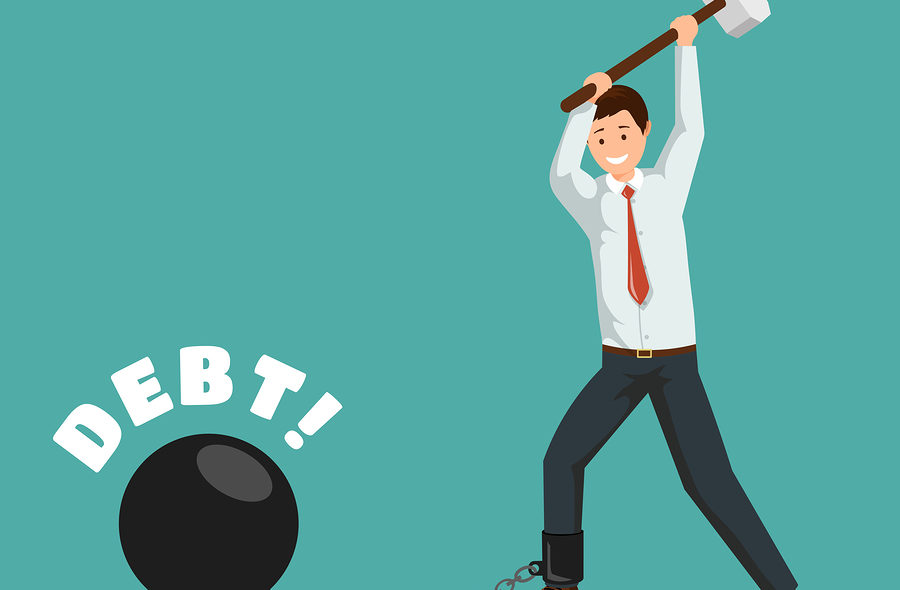Credit card debt is a problem for many people today. While having a credit card is not necessarily a bad thing, if you are unable to pay off the entire balance each month, the interest, fees and finance charges can accumulate quickly. This can eventually cause your credit card balance to spiral out of control. It helps to know what steps to take to eliminate credit card debt before it becomes too big of a problem.
- Use all your resources.
One tip that helps in attacking credit card debt is to maximize all the resources available to you. It can take a lot of time and dedication, but it does get the job done. To be successful with the method of throwing all your resources at your debt, you need to do the following:
- Rely on cash-only to pay for expenses. Make sure these expenses are essential in nature and not frivolous, causing you to waste more money rather than make progress.
- Put together a list of all credit card debt, detailing the interest rate for each card and the minimum payment on each card.
- Use the debt avalanche method to attack the debt. What this entails is the person chooses the card with the highest interest rate, and he or she uses all extra money that he or she has available at paying off that card. After that card is paid off, the money that was used to pay that card goes to the next one, and so on. The idea is the money that goes towards the card snowballs in size, helping to pay each one down quicker than the person would be able to do with just meeting monthly minimum payments.
- Find extra money to pay towards credit cards by creating a realistic budget and sticking to it.
- Consider a Balance-Transfer Credit Card.
If the person has a good credit rating, it is possible that he or she could open a new credit card with a lower interest rate for the sole purpose of transferring the balance from a current card with a higher interest rate. Many cards offer promotions for zero-percent annual percentage rates (APRs) with no balance transfer fees during that limited time period. This idea may seem like a bad one since it encourages the person to rely on a credit card to pay off another credit card. However, it can be a good idea if the person has good credit and is dedicated to paying off the balance on the new card, once the old balance is transferred. It is also important that the card holder take advantage of the introductory period to make sure the interest rate stays low while the amount is paid off. Once the period is over, the interest rate could jump up, thus bringing the cardholder to square one.
- Credit Consolidation Loan
Another method that is possible to pay off credit card debt is through a credit card consolidation loan. These loans are also referred to as debt consolidation or personal loans. Many of them are unsecured, meaning the person does not need to have assets or collateral to cover the obligation. The interest rates on these loans are usually lower than what the credit card interest rates would be, which makes it a little easier for the borrower to pay back the loan and make progress rather than pay the minimum payment owed on the credit card. Another benefit is the loan allows the person to only make one monthly payment rather than several different minimum payments on various credit cards. It is possible the borrower will need a cosigner, depending on his or her credit score, to back up the loan.
- Debt Management Plan
Another option that is available to individuals struggling to pay off credit card debt is a debt management plan. Debt management plans line the debtor up with a credit counselor who works with that person to create a budget and a plan to pay back the debt. The counselor will also speak with the person’s creditors on behalf of that individual and can often negotiate down the debt amount or terms of repayment. It is important to find a quality company when choosing a debt management company. Do research before jumping into the first choice and ensure that the company is legitimate and not a scam. An average debt management plan can take anywhere from four to five years for a person to successfully clear his or her debt.
- File for Bankruptcy
If none of these options work or if the debt is simply too much, bankruptcy may be the best option. Chapter 7 is the fastest form of consumer bankruptcy and forgives most unsecured debts like credit card debt, medical bills and personal loans. There are certain qualifications a consumer must meet in regards to income, assets and expenses to file for Chapter 7 bankruptcy, which is determined by the bankruptcy means test.
If you have questions on this topic or are in financial crisis and considering filing for bankruptcy, contact an experienced Miami bankruptcy attorney who can advise you of all of your options. As an experienced CPA as well as a proven bankruptcy lawyer, Timothy Kingcade knows how to help clients take full advantage of the bankruptcy laws to protect their assets and get successful results. Since 1996 Kingcade Garcia McMaken has been helping people from all walks of life build a better tomorrow. Our attorneys’ help thousands of people every year take advantage of their rights under bankruptcy protection to restart, rebuild and recover. The day you hire our firm, we will contact your creditors to stop the harassment. You can also find useful consumer information on the Kingcade Garcia McMaken website at www.miamibankruptcy.com.
Related Resources:
https://www.usatoday.com/story/money/personalfinance/2018/06/26/credit-card-debt-5-cost-effective-ways-you-can-erase/714014002/


